Sci fi earth gate Stingray/ Thunderbirds ships and more
international rescue
international rescueInternational Rescue use to be a secret, organisation before showing them selfs to the world in 2020 and now known tot he world but they are still the same as they were before a rescie group as they are a non-profit organisation dedicated to saving lives. Any who find themselves in danger, anywhere in the world, need only put out a call for help - on any frequency - and, from...somewhere...I.R. will hear it, and respondwreath it is in space, on the grounder or under the sea IR would always go to help

.
the World Aquanaut Security Patrol aka W.A.S.P
WASP (the World Aquanaut Security Patrol) is a fearless organisation used for preserving world peace and protecting the world from enemy threats. It is the home of the world famous nuclear powered combat submarine "Stingray." The World Aquanaut Security Patrol explore the world's oceans and defeat enemies by protecting the surface world from attacks from the undersea
Responsible for patrolling the oceans of the world and providing a defense against threats from the sea, the World Aquanaut Security Patrol operates from Marineville, a purpose-built base on America's western seaboard. Specially developed to provide the World Aquanaut Security Patrol with the fastest and most comprehensively equipped patrol ship imaginable, Stingray is based in Marineville's Pen 3, accessible at a moment's notice via injector tubes linked to its crew's stand-by lounge.
The organization was originally inaugurated in the early 21st century as a division of the World Navy Submarine Service, and was originally headquartered in San Diego alongside the World Naval Academy. On Novmber 15, 2036, Marineville was inaugurated as their new headquarters and became the hub of WASP activities. It remained a division of the World Navy until 2062, when it finally became its own separate entity under World Security Patrol jurisdiction
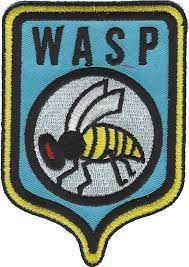
.
next the team
leader Kieron shadow
Pilot of Thunderbird 1
Captain of Stingray
( made the art my self)
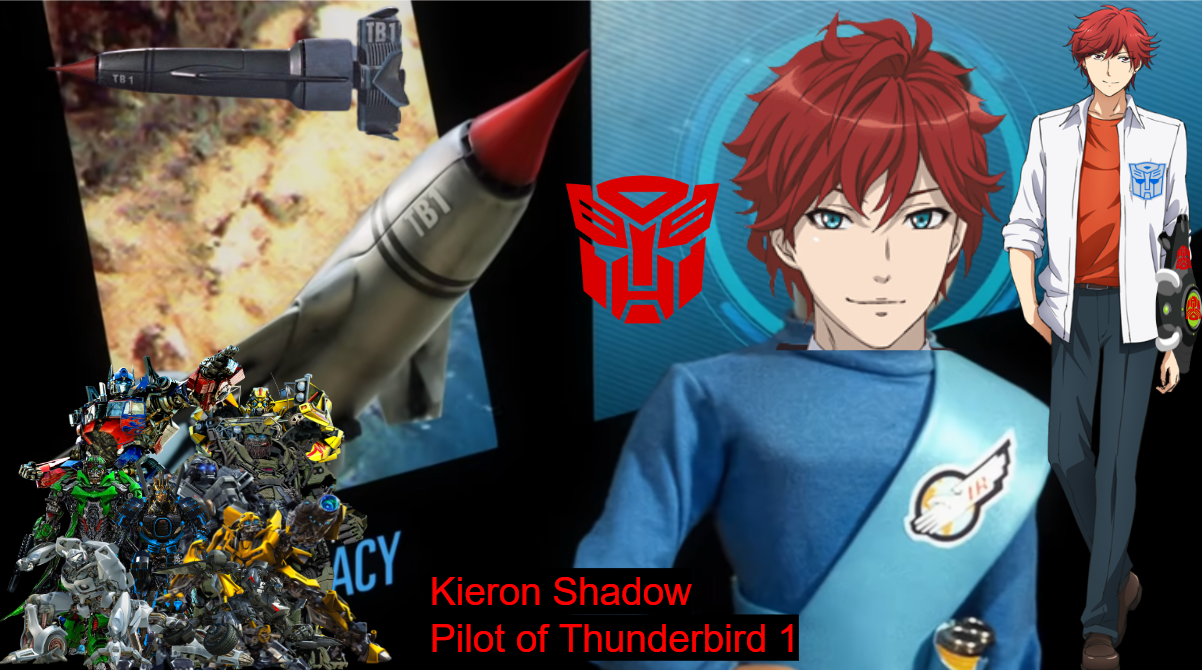
.
Jonson Shadow
Pilot of Thunderbird 2
co pilot of stingray
( made the art my self)

.
Sarah shadow
pilot of Thunderbird 3
( made the art my self)

.
apps shadow
Pilot of Thunderbird 4
( made the art my self)

.
Lily shadow
Pilot of Thunderbird 5
( made the art my self)

.
Kira Shore
sister to Jessica and works at Marineville

.
Jessica shore
she commander shore daughter and works on your ship aka the UNSA reaper

.
hawk
a wasp member mostly work with your OC sister and you
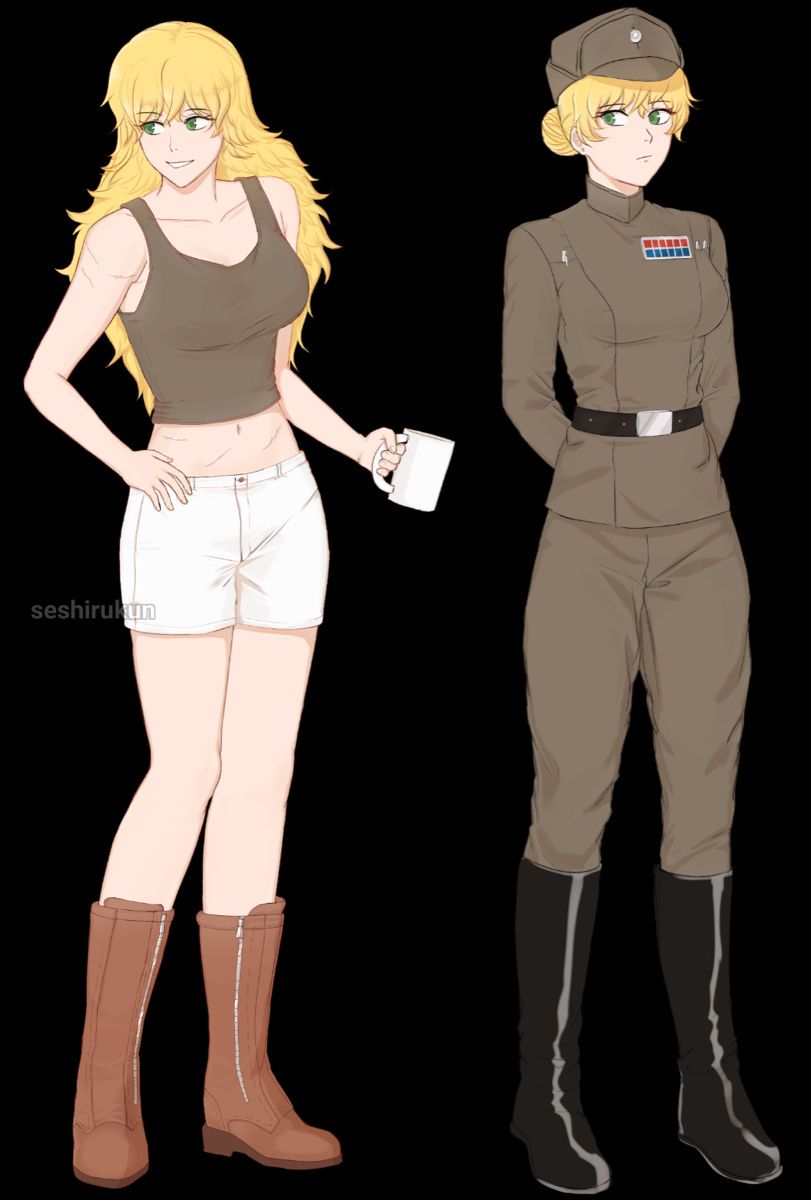
.
commander Sam shore ( in charge of Wasp)

.
here the base and ships
https://youtu.be/sgkk-MMif-4
Marineville is the headquarters of our team
Ten miles inland on America's western seaboard, Marineville is a completely self-contained town built to withstand aerial attack, so most of its surface installations are capable of descending into underground silos when 'Battle Stations' is sounded. In addition to a network of missile silos and underground aircraft hangars, it has an extensive subterranean dock complex.
Linked to the Pacific by a ten-mile-long tunnel, Marineville provides maintenance and launch facilities for the WASP's fleet of submarine craft, including its newest and most effective strike vessel, Stingray. Military personnel live on-site in underground barracks or apartments. Some civilian workers live on-site, and a few commute in from the surrounding area.
the base had also had hidden hanger bulit for the thunderbird machines
there are many Facilities at the base them being
Jailblock
Satellite communications station
Guardhouses
Underground service loop road: links main installations, above and below ground level
Hydromic missiles: powered by liquid gas, the dyna-prop rota engines can achieve speeds of 25,000 m.p.h. and deliver a variety of warheads
Aquanauts' living accommodation
Hydromic missile for twin launch gantries: when 'Battle Stations' is sounded, the gantries swing into an upright position into readiness for missile launch
Watertight doors: allow pens to be drained, enabling maintenance work to be carried out on berthed submarines
Hydraulic clamp: raises Stingray above water level when the sub is on stand-by
Observation point and harbour master's office: for controlling submarine traffic in he underground harbour
Underground harbour: gives access to all pens from the launch tunnels
Filtered waste pipes: lead to underground sewage stations
Fire station
Staff car maintenance and control building
Underground hangars for WASP's Arrowhead Interceptor fleet
Administration building: incorporates conference rooms, offices, and facilities for visiting navy personnel
WASP training unit
Control tower: incorporates communications centre and computer room
Shopping mall and leisure centre
Sports centre
Air-base radar station
Hospital
Underground storage facilities: food concentrates and medical supplies enable base to operate in isolation for up to three years
Gatehouses
Air-crew stand-by lounges, social clubs, offices, and visiting pilots' accommodation block
Social services offices
Helicopter landing pad: provides direct access to the hospital A&E department
Air-base administration building
Hangar for WASP Spearhead bomber flee and helicopters
Air-base control building
Underground service loop road
Officers' accomoddation: also used by control tower staff, blocks have wifht flats, each with a garage
Meeting and function rooms
Social club
Bar and restaurant
Marine research laboratories
Power plant with control room
Water filtration, purification and disturbing pumping stations
Auxiliary solar energy power plant
Security video cameras: others at perimeter fence, checkpoints, and streets
Water inlet pipes: lead from coastal pumping station to flitration and purification plants and power station
Power conduits: connect coastal tidal turbines with power plant
Filtered waste pipes: lead to underground sewerage stations
Several tracking stations
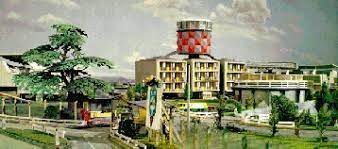
.
Patrol ships
stingray
now Stingray is a Sub and it has a Length of 85 feet aka 30 meters with a Width of 20 feet, when suface it has a Displacement: if 265 tons and when underwater it is 320 tons, it also has speeds of 400 knots above water and when underwater 600 knots and a range of unlimited meaning it can go all around the world and it has a max depth of 40,000 feet
its Engine are Dual Drumman Hydrojets Ratemaster Turbine it also carry underwater radar, torpedos know as sting missile and it has 60 in total, it has a targeting systum of surface video scan (SVS)-Periscope with digital video-scanning system and underwater radar, it also has Auxilary craft that are Aqua Sprites: dry one-man submersibles stored in depressions on the hull and Monocoptors: witch are small single seat hovercraft with sea Bugs: hand-held undersea propulsion devices used by swimmers
Docking bays: Topside exit hatch: the room immediately below the hatch can be sealed to form an airlock so that access is possible to the submarine while it is still submerged. Access via an injection tube is also possible through, yhis hatch whenever the Stingray is docked in Marineville's Pen 3.
Life support system: Pressurized air from water extractors: provide additional life support
Other systems: Q-tank: used to enable the Stingray to dive and surface quickly Underside landing skis: enable the vessel to put down on the sea bed or in the submarine pen if necessary. Guest sleeping quarters Cahelium strengthened windows
the sub also has bed rooms, bath room and kitchen as to let the crew live in the sub if need be

https://youtu.be/5HMXs8ju6Vo
https://youtu.be/30409dJLyzg
.
.
The Rescue ships
Thunderbird One. The craft has a sharp red nosecone, along with a cylindrical silver body, and a powerful blue engine. It has 4 variable-cycle gas turbine engines; 4 booster rockets; 1 variable-mode engine operating as a high-performance sustainer rocket for launch or boost as a variable-cycle gas turbine in flight. There is even the pitch and yaw jets; 20 forward and 25 rear. It also has a pair of small sweep wings on the sides of the craft, and the cross shaped bottom is positioned in the manner of a plus sign. It is 115ft tall, with a 80ft (35m when the wings are extended) wingspan, and a body diameter of 12ft. It has a definite underside and topside when flying horizontally; the underside has only one VTOL variable-mode jet engine operating as a rocket or variable-cycle gas turbine hover jet, while the topside has "THUNDERBIRD" written down it, completed by the "1" painted on both sides of the blue coloured section. The interior goes from the nosecone to the wings. The pilot's chair is located at the front, near the nosecone, where the windows are. There are no front facing windows, with the aerodynamic nosecone taking up the entire front.
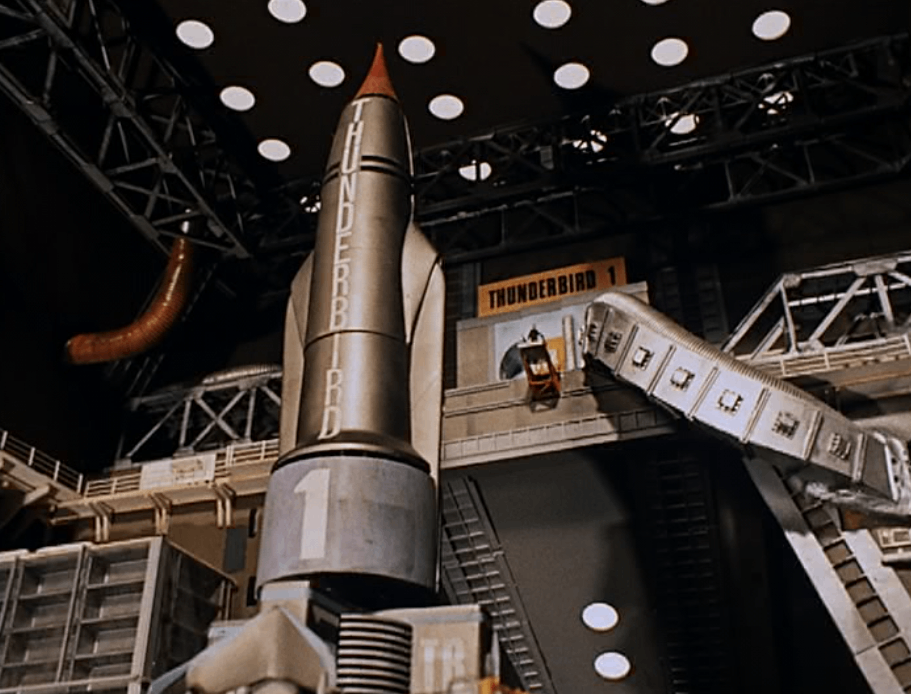
https://youtu.be/nMemf96VqOM
.
Thunderbird Two, the workhorse of the fleet. This craft is a green colour scheme, with white writing of its name on either side of the cockpit, and the number '2' on the tail section, and the T2 on the wings. The craft has 2 variable-cycle gas turbine engines operating as turbofans at low speed and supersonic combustion ram jets at high speed, with 12 variable-cycle turbo-ram cruise / trim jets in the tailplane, 4 VTOL turbofan jets in the main body, and 4 VTOL chemical rockets in the landing legs. The ship is 60ft tall (110ft with the pod lowered), while being 250ft long, with a 180ft wingspan. It has an atomic fusion reactor for its power source. Thunderbird 2 is comprised of two parts: a framed superstructure and a pod. Thunderbird 2's frame incorporates the cockpit, wings, and fuel tank near the vehicle's front, and at the rear the engines and the tailplane, which serves to aid lift and stability. Two stilts are located each at the front and back of the craft to hydraulically lift the craft upward, allowing for the clearing of the pod. Its middle is hollow, to fully accommodate one of the six pods that is required for the mission. Each pod is equipped with undercarriage for a smooth landing for the ship, and contains a huge capacity for storing the rescue vehicle that is needed. The craft is, however, completely capable of vertical takeoff and landing without the pod, but has less integrity this way.

https://youtu.be/s_MtFShbM7k
.
the rocket ship, Thunderbird Three. This rocket is 287ft tall, with a body diameter of 70ft, with a wingspan of 70ft, the nacelle span of 80ft, while having a maximum acceleration of 10Gs (over 30,000mph). The drive system is an Ion-drive particle accelerator, with a hybrid electromagnetic/rocket motor. The vessel is in bright red with a white 'THUNDERBIRD' leading back to the dark grey fan-like structure in the middle of the vessel, with three arm-like protrusions on either side of the craft's body, which link up with the three-engine rounded base of the rocket, the number 3 in white on the base. The cockpit is located in the upper-middle of the rocket's body and it has 4 seats. This rocket has Engines: 3 chemical rocket boosters used for launch, landing, emergency boost, and orbit change, with 3 ion-drive particle accelerators used in deep space, along with pitch and yaw rockets. There are 12 boosters in middle ring for course corrections, 20 in the nose and 24 at the rear for attitude adjustments. The rocket has an atomic fusion reactor, an emergency acceleration of 10Gs, with a launch thrust of 4.5 million pounds, a max sustained acceleration of 6Gs, and standard acceleration of G1s
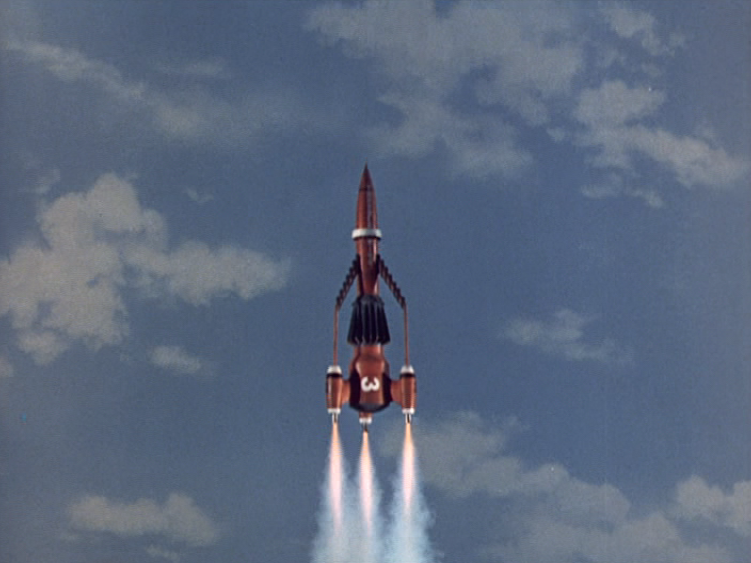
https://youtu.be/tz8XOUUSSRE
.
the small yellow submersible known as Thunderbird Four. This small submarine seems to be like a small pocket rocket with a small tailfin on the back of the craft with the rear engines on either side of the craft, and on the front of the sub is a light bar. The craft is 30ft long, with an 11ft width, and weighing 16 tonnes. Is has 4 vertical-thrust hover jets, and 2 x 25 liquid fuel mini-rockets. Is has 6 electrically driven reversible axial-flow turbine impellers for forward and reverse drive. The main turbo drive is 2 axial-flow turbines, providing forward thrust only. It's power source are twin atomic fusion reactors. It's surface cruising speed is 40 knots, with an underwater speed of 160 knots, an emergency launch speed of 30mph. The maximum speed underwater is 160 knots, with a max operating depth of 30,000ft below sea level.
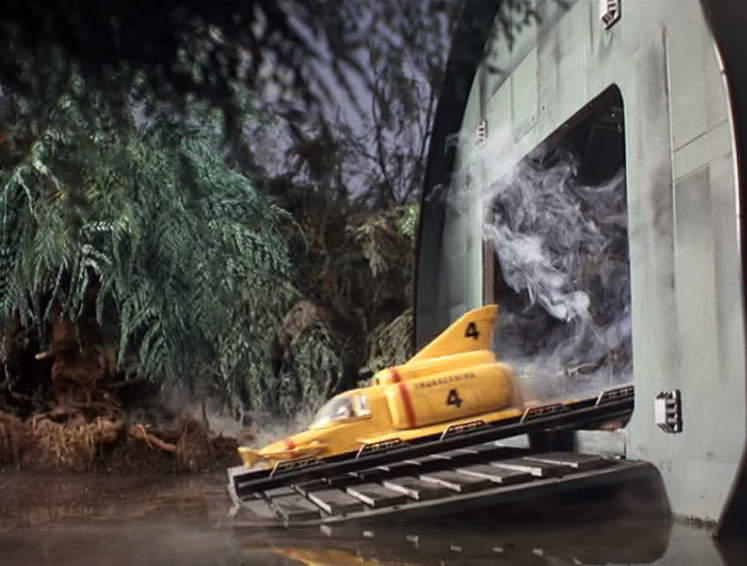
https://youtu.be/osnEXnl7j1w
.
Thunderbird 5 - International Rescue's geo-stationary orbital satellite - monitors radio frequencies, 24/7, for distress signals. Usually manned by primary space monitor Lily Ozpin, she trades-off with her younger Sister Sarah- and sometimes even her older brother, Kieron- on one-month shifts aboard the station. Brains is a frequent visitor, to assure TB5 keeps in perfect working order; and even Jonson and Apps have visited on occasion!
Bristling with antennae and a myriad of sophisticated listening devices, TB5 is a world all its own - unique, even amongst the company of its sister Thunderbirds. Its mission is of paramount importance to the very existence of International Rescue...Step into its spacious control room - and be greeted by a spectacular vista of the Earth, through a long observation window of thick shatterproof glass. Elsewhere, along one entire wall, countless radios (covering most frequencies) and speakers enable whoever's on monitor duty to listen to incoming signals in all as many languages.
This sensitive equipment (capable of transmitting and receiving both audio and video) detects, amplifies and (as necessary) translates appeals for help - assistance IR, alone, is capable of providing - which are then relayed to IR headquarters on ozpin Island for action; and, once again, Thunderbirds are GO!. Although well-shielded and otherwise protected, TB5's main control room is further backed-up by a specially-built duplicate control facility should an emergency situation arise. All monitoring functions are automatically transferred; computer systems are independently-powered via the adjacent solar energy panels, and all data is duplicated from the primary systems, to assure that TB5 remains in continuous service.
Thunderbird 3 provides transport to and from Thunderbird 5 - docking with the space station via its custom-designed docking collar and airlock - as well as caches of fresh supplies and transfers of monitor personnel. Just off the control room, are sleeping quarters where the crew can rest when not on-duty. Since rescue calls detected by the station's computers are broadcast throughout TB5, lily can easily access these communications wherever he is on the station, at any given moment...

https://youtu.be/Pq7EQMtHVzA
Bạn đang đọc truyện trên: Truyen247.Pro